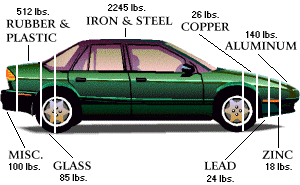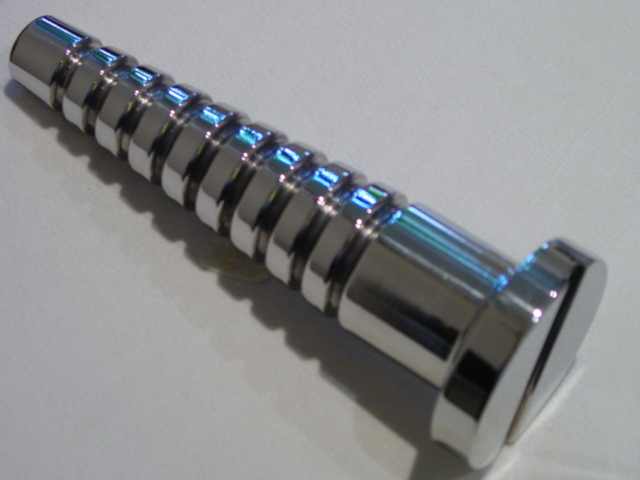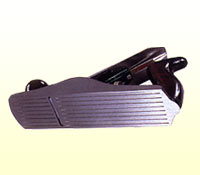
Iron
Pure iron is a white lustrous metal with a high density (7.86g/cm3) and a high melting point of about 1 500 degrees Celsius. It is very mallable, has a high tensile strength and is a good conductor of heat and electricity. However, it is seldom found on its own.
However, the iron obtained directly from the blast furnace in a steel mill, pig-iron, is very impure and contains 3% to 5% carbon and other trace elements. It is brittle, has low tensile strength and rusts readily. As a result, its uses are restricted to making products that undergo no great strain, such as lamp-posts, stoves and man-hole covers.


Manhole Cover and Lamppost made of Pig-iron
Alloys of Iron
By controlling the types and amounts of trace elements present in pig iron, the uses of iron are greatly enhanced. Mild steel, an alloy of iron, with carbon content of 0.2% is softer, less brittle, resists rusting and can be welded. It is used to make car bodies, bridges, ships and common household appliances.

Parts of a Car

Bridge constructed with Mild Steel
Stainless steel, another alloy of iron, containing 1% carbon with small amounts of tungsten, chromium and nickel, is extremely hard with strong resistance to rusting. You will find their uses in the form of cutlery and saucepans.


Stainless Steel Cutlery and Saucepan
On the other hand, tool steel, often containing tungsten, chromium, vanadium are used to make cutting tools of the best quality.


Screw and Cutting Tool made out of Tool Steel